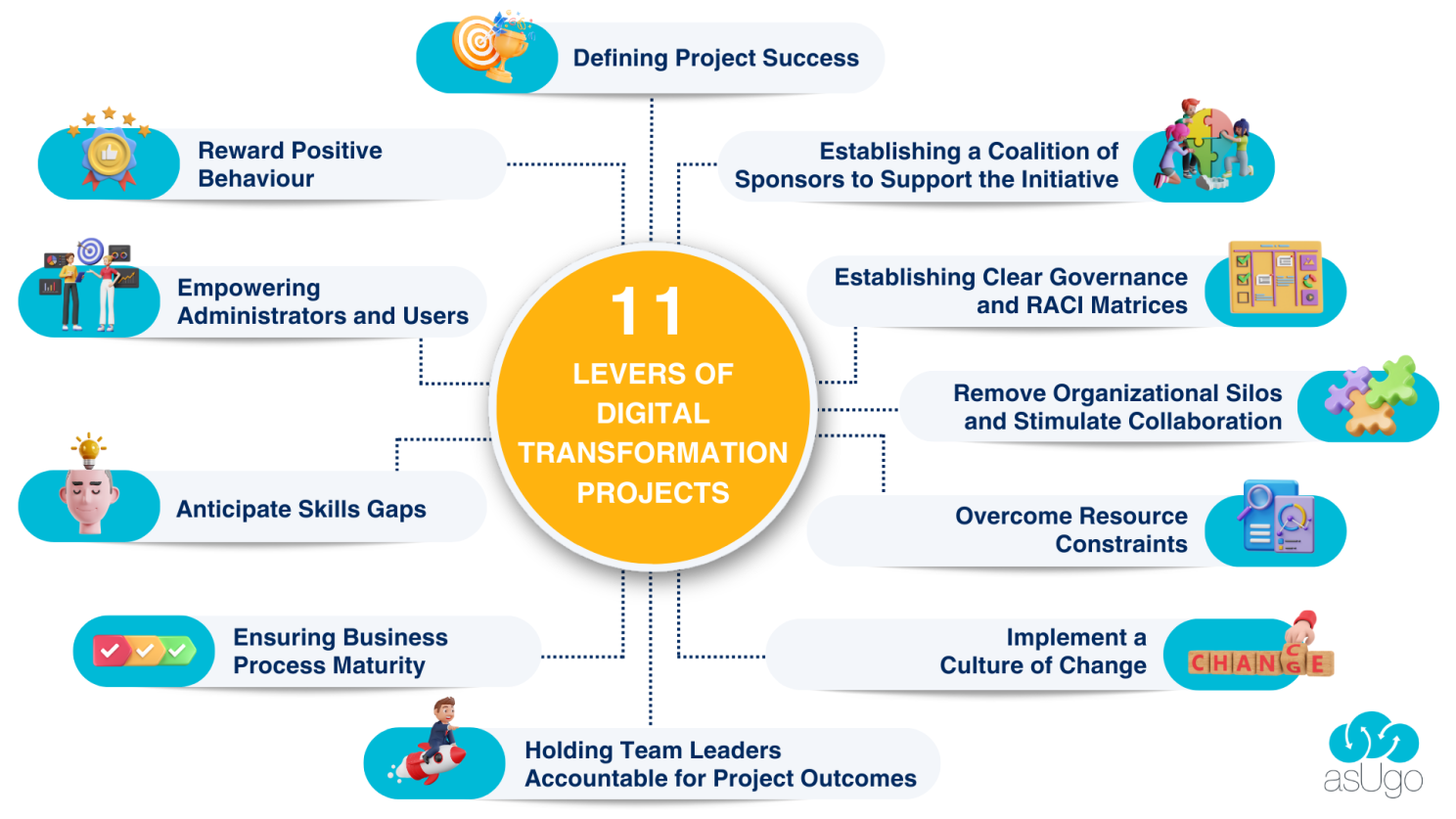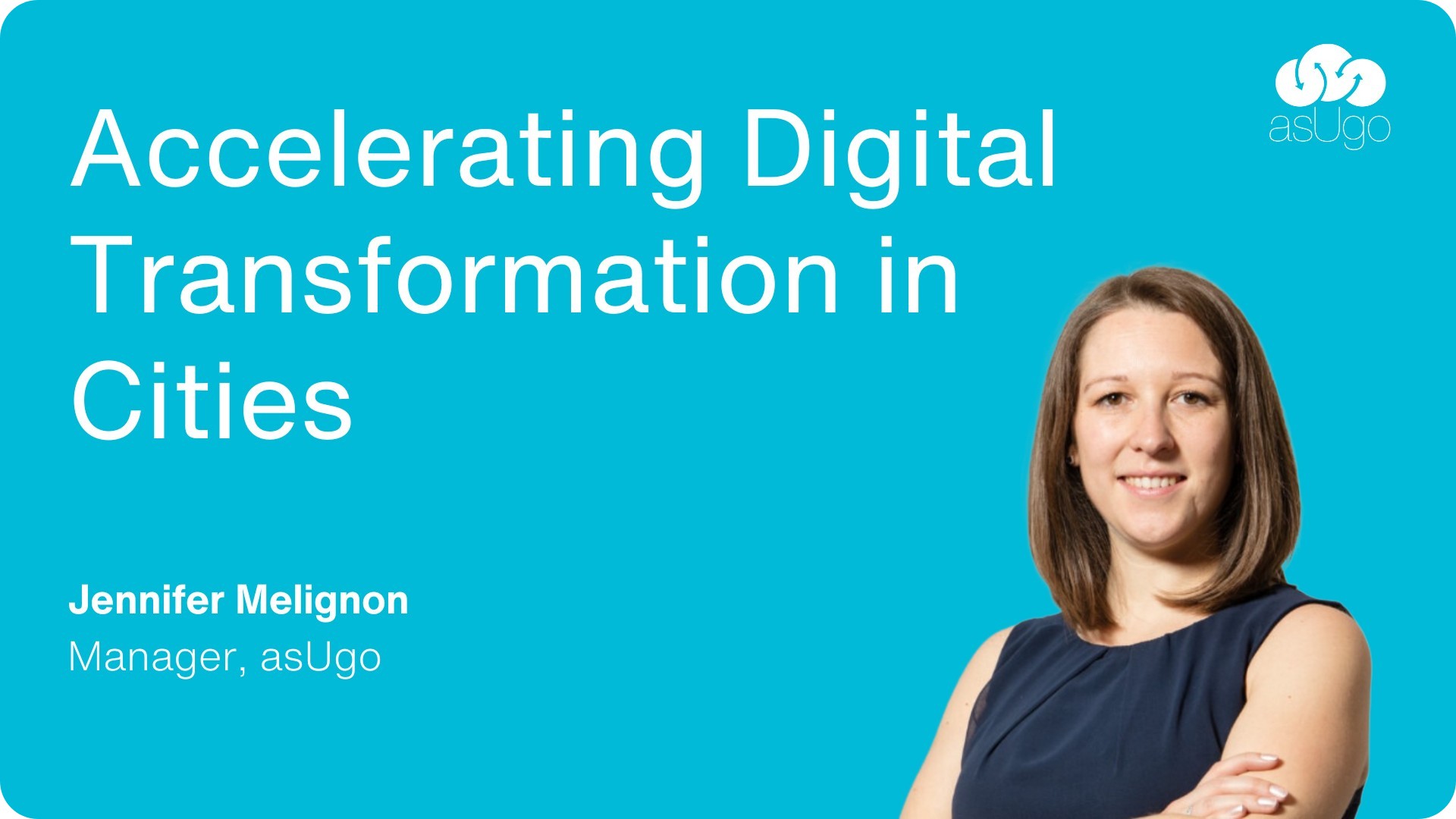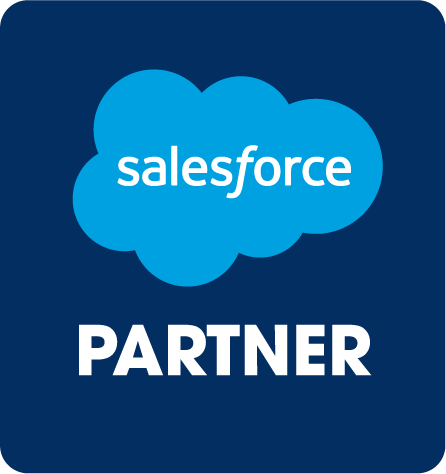
Change is inevitable, especially in the dynamic landscape of the public sector. With the aim to reposition citizens at the center of all interactions and make the actions of public administration more efficient, various levels of government have introduced ambitious digital transformation programs. When change management intersects with the ongoing digital transformation efforts, resistances to change may pose significant challenges…
In asUgo experience working on projects within the public sector, we’ve observed consistent patterns in the challenges faced by public entities when it comes to change management. Effectively managing change and overcoming resistances is crucial for project success. By addressing these challenges strategically and leveraging key factors contributing to success, public sector organizations can navigate the complexities of digital transformation more effectively. Discover our 11 levers to maximize success in digital transformation projects for the public sector:

Defining Project Success
A clear definition of the project expected outcomes is key. This involves establishing clear project objectives, key success indicators, and quantifying these indicators to ensure alignment with organizational goals. With these explicit success indicators in place, we can align all stakeholders with the objectives, prioritize efforts, and assess success at various project milestones.
Establishing a Coalition of Sponsors to Support the Initiative
It’s imperative for both the sponsor and the entire executive committee to be in alignment with the project’s objectives and aspirations. This minimizes power struggles and helps gain support from key stakeholders, which is essential for driving the transformation forward effectively.
Establishing Clear Governance and RACI Matrices
This is vital for any aspect of the project. It entails clearly defining who makes decisions on specific issues and who has authority over which resources to streamline decision-making processes and avoid confusion.
Remove Organizational Silos and Stimulate Collaboration
Many departments exist in silos, with little to no communication or collaboration between them. Despite sharing similar technology requirements and business use cases, the absence of communication may lead to each department procuring separate digital software solutions or imagining various flows to reach their objectives. Consequently, they miss out on the advantages of using common technology and sharing data. Performing a detailed impact analysis at the beginning of the project will allow the involvement of all relevant stakeholders at key milestones, mitigate silos and foster collaboration.
Overcome Resource Constraints
Constrained budgets and scarce resources may hinder progress in digital projects and change initiatives. We suggest the following actions:
-
Allocate adequate internal resources to the project: Ensure roles such as the project sponsor, product owner, business analyst, and future Salesforce admin (IT) are filled to guarantee project success and ownership. Recognize the importance of team leaders’ involvement and anticipate the need for super-users to assist their colleagues in continuous improvement efforts.
-
Acknowledge the importance of change management: In tight budget situations, change management initiatives are often overlooked. However, when successful tool adoption is crucial for project success, the significance of change management initiatives cannot be underestimated, particularly in organizations with a weak change culture.
-
Prefer fixed-price projects to minimize additional costs: In budget-constrained scenarios, maintain flexibility in scope. Be prepared to simplify processes, adopt a proof of concept (POC) approach, think big but start small, and proceed in a mode where decisions are made with no regrets.
Implement a Culture of Change
One of the foremost challenges lies in fostering a culture that embraces change. Experienced employees often feel a sense of familiarity with their current processes and workflows, which may lead them to overlook the need for digital upgrades. Additionally, some individuals may express concerns about how the digital transformation will impact their roles and responsibilities. Strong change management processes and inspiring leadership are major drivers of this culture of change. Leaders must articulate a compelling vision, bring different departments and sectors together, inspire confidence, and lead by example. Making sure to motivate public sector leaders at all levels fosters ownership and commitment to the change process.
Holding Team Leaders Accountable for Project Outcomes
The team leader serves as the primary point of contact for end users, responsible for providing each team with an action plan, defining “What’s In It For Me” (WIFM) for team members, effective communication, training, coaching, support, feedback sessions, and setting adoption goals for each team. These measures are essential for ensuring team adoption.
Ensuring Business Process Maturity
Often, changing systems triggers the need to redefine processes. Ensuring that processes are mature and well-established prior to implement changes can facilitate smoother transitions and prevent the need for multiple reworks.
Anticipate skills gaps
Mastering new digital solutions comes easily to certain employees, while others find it challenging. Additionally, there could be reluctance among certain individuals to acquire new skills, preferring to adhere to familiar methods. We recommend developing strategies to tackle skill gaps and disparities through training, e-learning, hands-on experience, mentorship, superusers and support sessions.
Empowering Administrators and Users
Identifying and coaching administrators and business users for rapid adoption is essential. This involves providing comprehensive training, coaching, and involving administrators in the implementation team to build an internal centre of excellence, promoting rapid adoption, and ensuring effective utilization of the new systems.
Reward Positive Behaviour
Rewarding positive behaviours and adoption is key. Setting adoption goals for each team, providing clear objectives for team leaders, and celebrating successes are essential for reinforcing positive behaviours and encouraging widespread adoption.
By addressing these key factors, public entities can navigate the complexities of digital transformation and realize the full benefits of modernization.
Let’s embrace change as an opportunity for growth and innovation.
Romane Georis
Céline Brandt
Marion van Raemdonck




